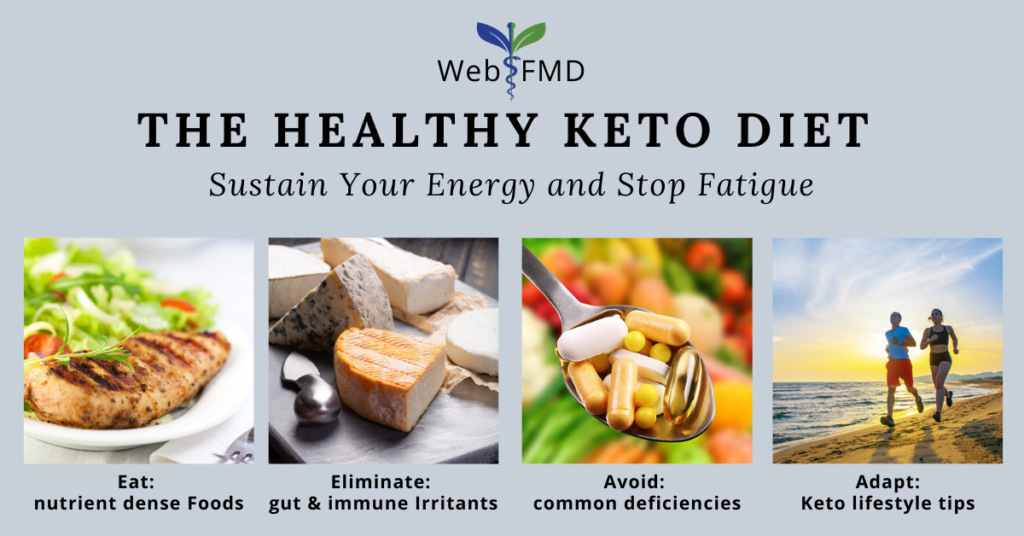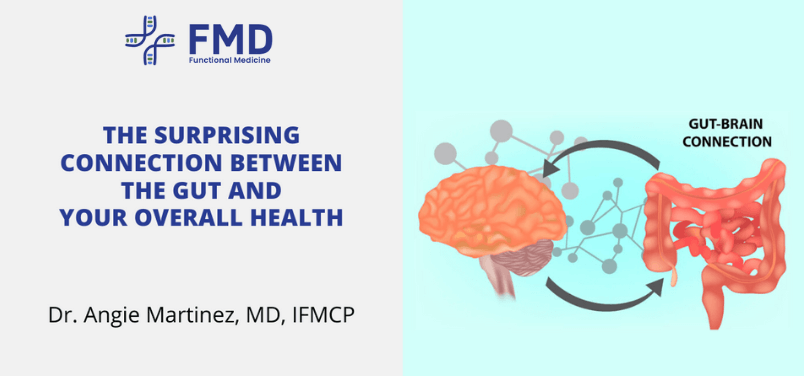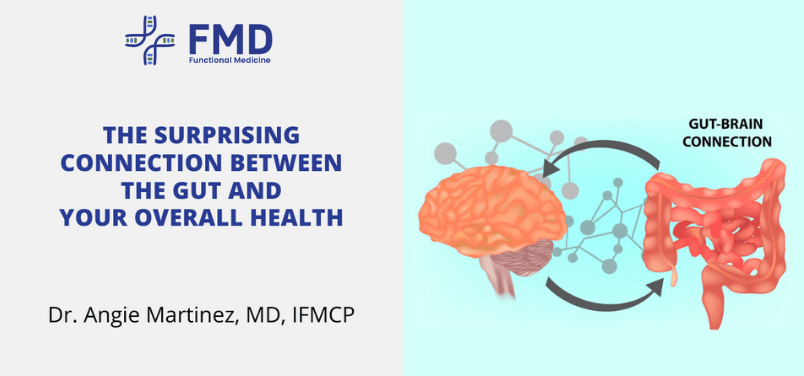 |
Dr. Karyn Shanks, MD Functional Medicine Doctor ketogenic Diet Expert |
Benefits | Foods to Eat | Foods to Avoid | Macros | Getting Started | Testing Ketones | Intermittent Fasting | Exercise
You may have heard about the ketogenic “keto” diet in the context of weight loss, but there’s much more value to it than just getting rid of excess body fat. Adopting a ketogenic diet is a way to influence genetic expression in order to transform the way your body uses energy. It may, in fact, offer an effective strategy for reducing fatigue and improving low energy issues.
In this post, I’m sharing my approach to a healthy, nutrient dense, keto diet, as a tool to give you long-lasting energy throughout the entire day. My goal is to help you learn how to follow the keto diet correctly to minimize some of the common pitfalls and challenges that many people face when trying this different way of eating.
The Keto Diet in a Nutshell: From Carb Energy to Fats
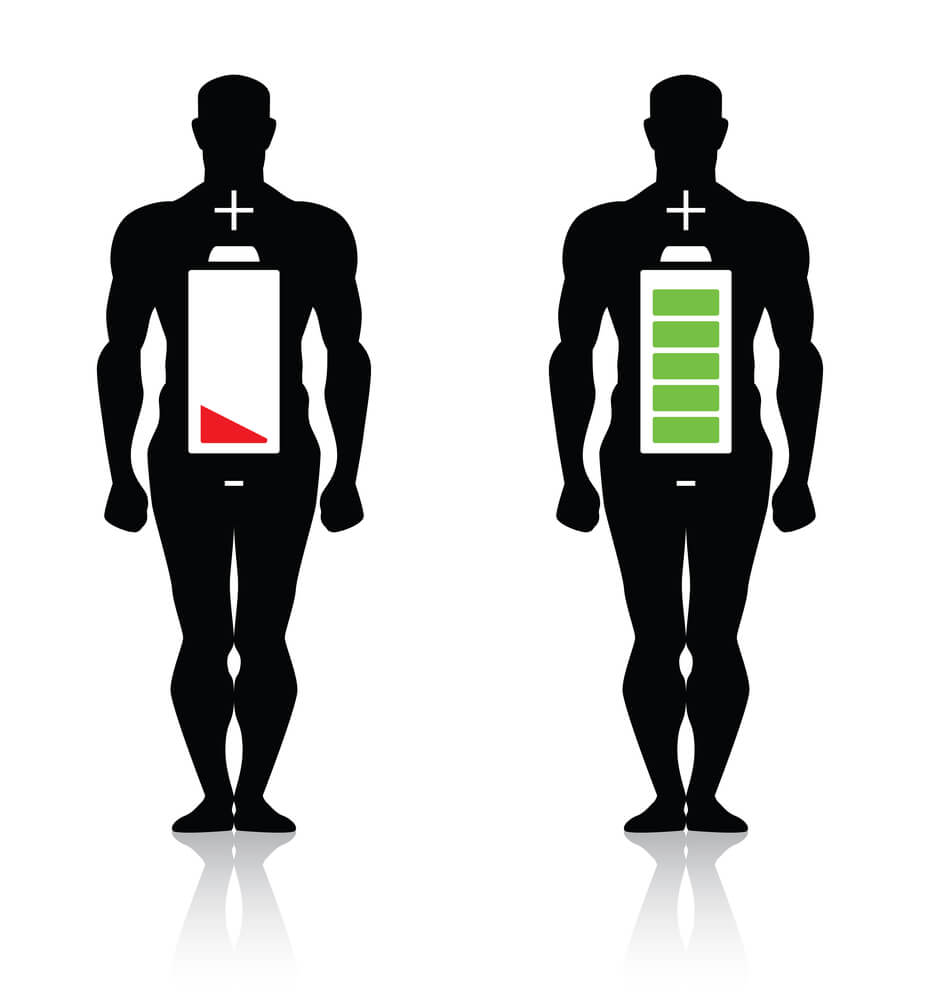
I like to explain the ketogenic diet as a food strategy where we shift our metabolism away from using carbohydrates as the primary energy source, to using fat instead. This is done by eating more fat and restricting carbohydrates. Changing the diet in this way depletes your body of glucose as its primary energy source, forcing it to switch to using fat for energy instead.
In the scientific community, the interest around the keto diet has been booming over the last decade. Preliminary research has discovered some impressive potential health benefits. Eating a ketogenic diet appears to provide a cleaner and more efficient source of energy for the body. It also may protect the brain, increase neuroplasticity, and reverse damage in cases of neurodegeneration.
Some of the advantages to a ketogenic diet may include:
- Self-sustaining consistent energy
- Better cognitive function
- Reduced oxidative stress.[1]
- Increased number of mitochondria within our cells.[1]
- Reduced inflammation
- Reduced toxicity
- Improved hormonal balance including better insulin sensitivity.[2]
- Accelerated fat loss
- May support those with chronic diseases such as Type 2 Diabetes, Polycystic Ovary Syndrome (PCOS), hypertension, obesity, neurodegenerative diseases[1] (Alzheimer’s, Parkinson’s disease), epilepsy[3], and cognitive decline.[4]
- Improved cholesterol profile.[2]
With that said, there are a few cases where a keto diet may not be a good fit, which may include (but not limited to):
- Fat malabsorption or gallbladder disease
- Severe fatigue, stress, or illness (may need other forms of support and restoration before beginning keto)
- Pregnant or lactating women
- Athletes (especially those who do quick and explosive movements. Endurance athletes may do fine with a keto diet).
A Healthy Keto Diet: Beyond Just Restricting Carbs
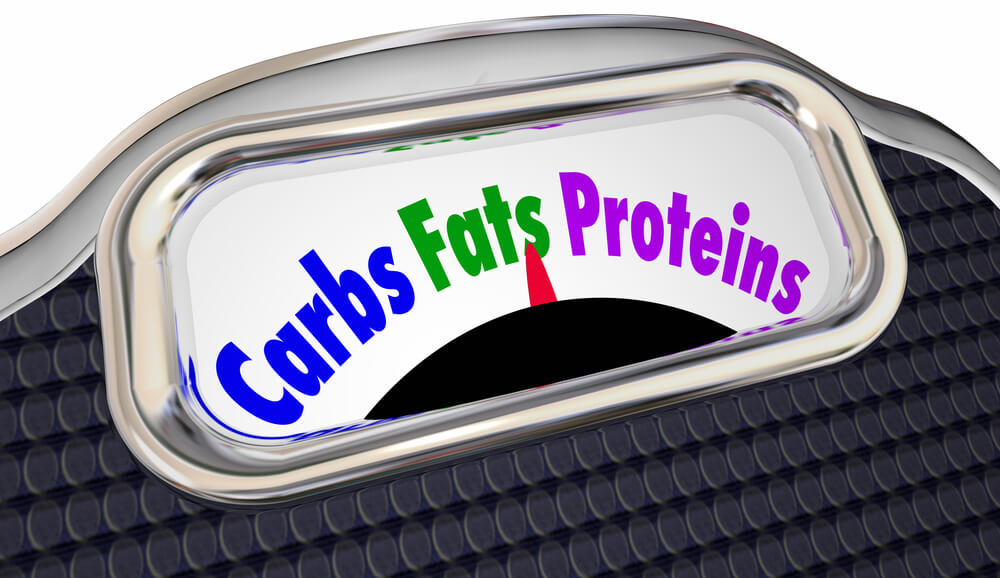
While the ketogenic diet that was originally successfully used as a medical treatment for childhood epilepsy focused mainly on eating more fats and restricting carbs, we now know that the types and sources of fats, protein, fiber, as well as the nutrient density of the foods consumed are extremely important.
A healthy keto diet means eating foods that provide all the essential nutrients and promote gut health, while avoiding common gut and immune system irritants. In my practice, I have found that the healthier approach is the most beneficial version of a ketogenic diet if the goal is sustained energy and disease management.
Foods to Avoid
One of the benefits of keto is that it, by default, eliminates common gut and immune system irritants from the diet, found in many high carbohydrate foods. Grains, gluten, and legumes are the top of this list.
For many people, limiting these foods can reduce inflammation, as well as promote better gut and microbiome health. I usually recommend avoiding dairy products as well, as they are common immune system irritants many people are sensitive to.
In addition to these common inflammatory foods, other foods to limit while on the keto diet include:
- Processed foods
- Starchy vegetables: carrots, sweet and white potatoes, peppers, squash, tomatoes, peas, and green beans.
- Fruits: once transitioned, small amounts of berries such as blackberries or blueberries may be a good option as they are high in antioxidants and phytonutrients but have low sugar content compared to other fruits.
- Beans and legumes
- Nuts and Seeds: use with caution, as they may trigger inflammation in some people. Some nuts are higher in carbs than others. Macadamia nuts and hemp seeds are low carb options you can include.
After being on the diet for a while, you may be able to add back some low-carbohydrate fruit and small portions of starchy vegetables without sacrificing ketosis.
What Can You Eat on The Keto Diet?
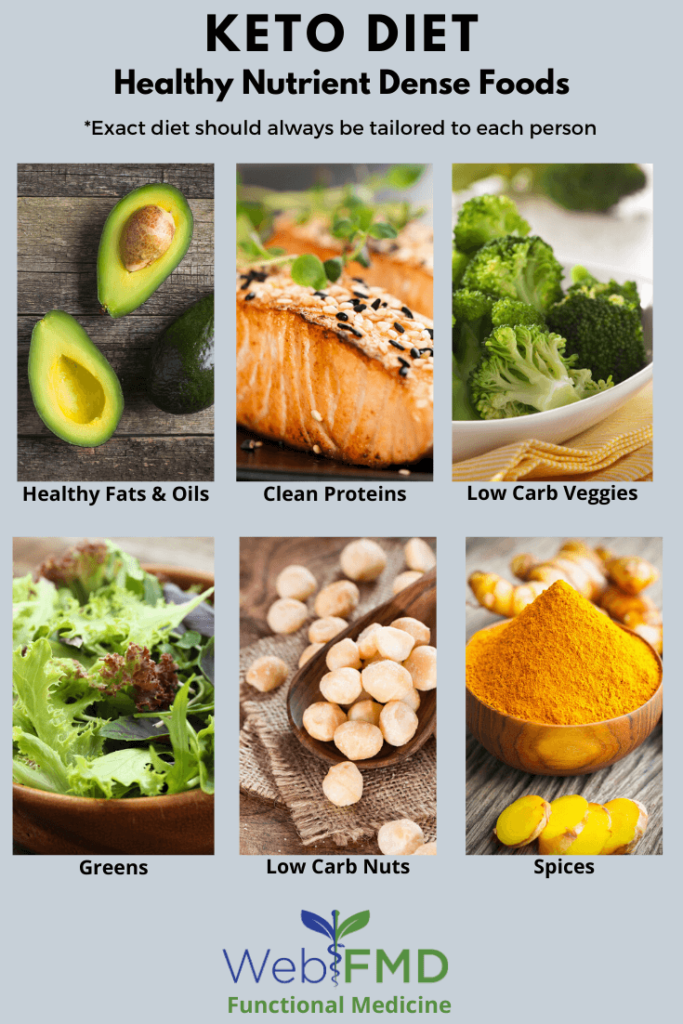
The diet plan can be very different from one person to another and should always be personalized to address individual health concerns and preferences. No one should be on the exact same diet. With that said, if you wonder what a healthy keto diet may look like, here are some of the more common foods to include:
Healthy fats for keto: More than just animal fats
- Avocados
- Fatty wild-caught fish such as salmon, mackerel, herring, and sardines
- Pasture-raised meats
- Olives
- Oils: avocado, coconut, olive, coconut oil and cream
- High-fat nuts such as macadamia nuts.
Healthy proteins
Carefully source your animal protein—choose pasture-raised without antibiotics, hormones, or pesticides.
- Pasture-raised meat
- Poultry
- Eggs
- Wild-caught fish
- Collagen
- Organ meat, such as liver and heart, for additional energy promoting nutrients
- Hemp seeds.
Low Carbohydrate, Nutrient Dense Plants & Spices
- Dark green leafy greens (spinach, kale, collards, chard, cruciferous sprouts)
- Cruciferous vegetables (kale, cabbage, broccoli, cauliflower, watercress, Brussel’s sprouts)
- Onions
- Garlic
- Spices such as: turmeric, ginger and others. These are high in phytonutrients without the carbohydrates and the calories.
Is a Vegan Keto Diet a Good Option?

A healthy keto diet includes eating a lot of low carb plant-based foods. Lately, there has been a new interest in trying to combine the health benefits of two popular diets- keto and vegan. This has spurred many people to try to follow a vegan keto diet to maximize their health.
A vegan keto diet, however, may not be an ideal pathway to better health. The keto diet restricts many of the plant sources used to provide protein in a vegan diet, such as beans, legumes, and grains. Without the use of animal protein sources, getting enough protein will be a challenge without the use of plant-based protein supplements such as pea, hemp, and soy proteins. These present a unique nutritional challenge in that they are high in lectins, defense molecules found on their surfaces that can lead to gut inflammation, increase gut permeability, and may play a role in chronic inflammatory and autoimmune diseases.
A healthy vegan keto diet can be extremely difficult and will most likely require a large use of very strategic supplementation including concentrated plant-based proteins powders and oils. Following a vegetarian or pescatarian keto diet is more realistic and sustainable approach.
Macros on the Ketogenic Diet

Now that we discussed foods to avoid and some of the better options of foods to eat, here are some helpful guidelines about the macronutrients on the ketogenic diet:
How Many Carbs Can You Have on Keto?
Use “net carb” grams to track your carbohydrate intake. To calculate the net carbs in the foods you consume, take the total grams of carbs and subtract the grams of fiber. Basing your carb consumption on net carbs, instead of total carbs, will help you eat enough fiber to keep your digestive system healthy.
Carbs intake may be very different from one person to another. Some people can eat 70-80 grams of net carbs a day and still stay in ketosis, while others have to go as low as 20 grams of net carbs per day, particularly in the early weeks of the keto diet while the body is shifting into ketosis.
How Much Protein on Keto?
Many keto diets drastically limit protein intake. The logic behind this common trend is that protein can be converted to glucose via gluconeogenesis, and therefore, may prevent or kick you out of ketosis.
If you go too low on the protein, however, you may end up with a protein deficiency. Your body still needs enough amino acids to function, heal and repair. A good rule of thumb for daily protein intake, is 0.5-0.8 grams per pound bodyweight, depending on your activity level.
Supplements for Keto

In my practice, I have found that almost everyone can benefit from some form of nutritional supplementation to prevent deficiencies. I don’t automatically recommend a multivitamin/mineral supplement to all patients, as we do individual nutritional testing and focus on what’s needed.
With that said, if you have just started on a ketogenic diet, using a multivitamin/mineral supplement can be helpful, especially since we decrease many of the plant-based nutrients that are critical to health.
Specific to the keto diet, there are a few nutrients that are often low:
- Phytonutrients: Due to the restriction of plant-based foods.
Look for natural herbs and spices such as green tea, turmeric, and ginger that are high in phytonutrients and antioxidants without the added carbohydrates. - Minerals & electrolyte: especially sodium chloride, potassium, magnesium, and zinc.
Due to the robust water loss in the initial phase of the keto diet, many people experience dehydration and electrolyte loss. You may also notice muscle cramping. To help your body in the process, drink enough water, and add natural salt to your meals. Pink Himalayan sea salt is a great option for a healthy salt. Electrolyte supplements that contain potassium and magnesium may also be very helpful during this process.
MCTs (Medium-chain triglycerides)
I usually recommend using MCT oil, extracted from coconut, to help with energy levels during the initial transition. It appears to augment ketosis, as the body can easily convert MCTs to ketones, going straight to the mitochondria for energy.
With that said, your gut microbiome needs to adapt to MCTs, so start with ¼ teaspoon a day. Slowly work your way up to one tablespoon a day. Taking too much MCTs at once can cause digestive issues, including diarrhea and gas.
Black Coffee or Bulletproof Coffee

Coffee is a highly nutritive drink with powerful antioxidants. It has been shown to support cognitive function, neuroplasticity and decrease neurodegeneration. So, if coffee agrees with you, using it as a quick energy-booster can be a very helpful addition to a keto lifestyle.
Coffee may also serve as an effective vehicle when you add healthy fats to it, used in drinks like bulletproof coffee. Drinking coffee can also be helpful for those who combine keto diet with intermittent fasting to help with hunger.
Keto Diet: Four Key Lifestyle Tips
How to Start a Keto Diet
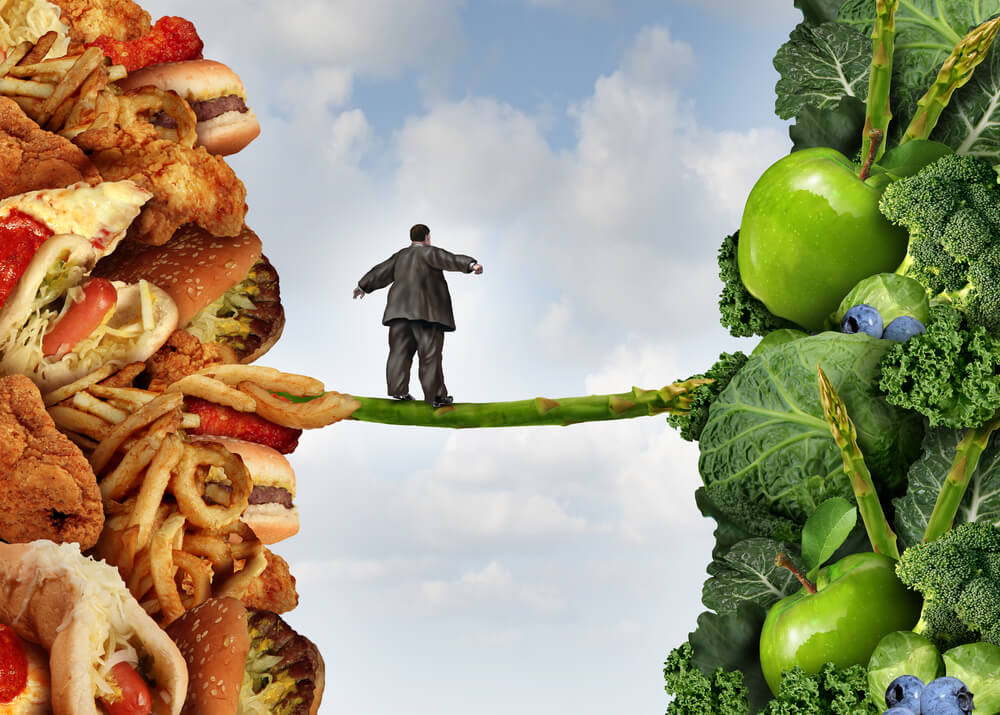
Thanks to our ancestors who used to live on a low sugar, nutrient dense diets, we all have a natural mechanism in our bodies that allows us to use fat for energy. Adapting to the keto diet however, after years of eating carbs may take time.
During this adaptation period, you may experience what is commonly known as “keto flu”: weakness, irritability, with noticeably low energy. The presence of these uncomfortable symptoms and their duration will vary from person to person.
If you are used to eating a Standard American Diet, full of processed carbohydrates, then it may be wise to transition to keto slowly. Whereas if you already follow a paleo diet with wholesome foods, your transition into keto may be smoother.
How to Tell if You’re in Ketosis
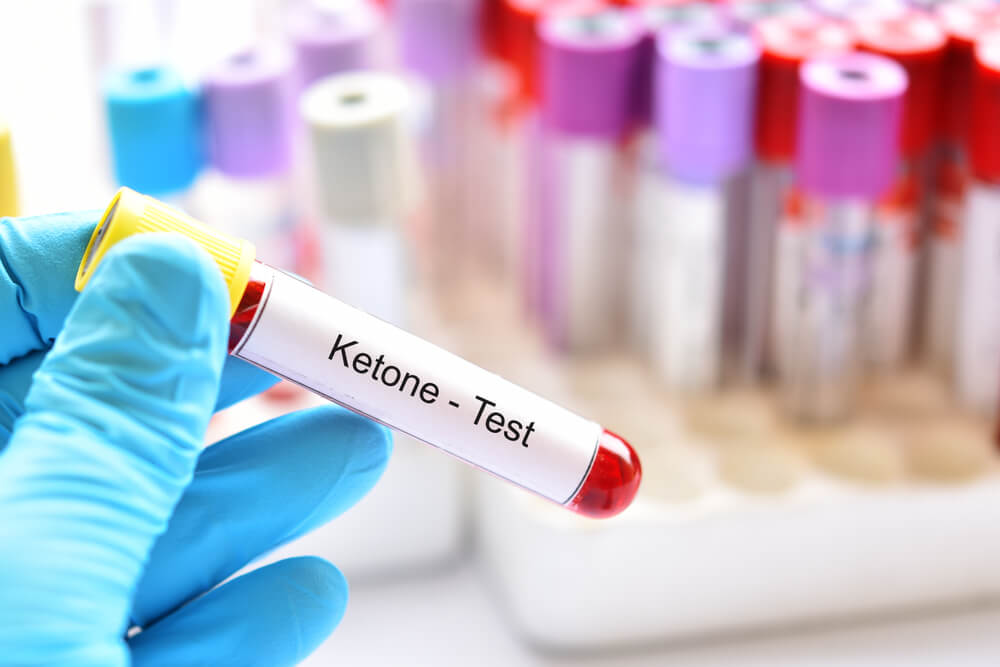
While not always necessary, it may be helpful to measure your ketone levels to know if you are in ketosis during the initial phase of the diet:
- Urine ketone strips (“ketostix”): test urine for the presence of ketones.
Use first thing in the morning, and 2-3 times throughout the day. The reading doesn’t have to be high. Any degree of ketones on the strips indicate you are likely in ketosis. It’s important to note that this method is not always the most accurate. - Blood ketone meters are much more accurate.
Ketone levels in the 0.6-1.5 mmol/l range are average once your body has adapted to the keto diet.
Why I am In and out of ketosis?
Many of my patients notice that they are not in ketosis in the morning. This is often due to a natural stress response to the overnight fast. The liver makes glucose which can raise your blood glucose levels and reduce the production of ketones. This variation throughout the day is completely normal and nothing to be discouraged about.
You do not have to be in ketosis all the time in order to benefit from the keto diet.
Certain activities such as working out or stressful events can cause you to get out of ketosis temporarily.
Keto and Intermittent Fasting
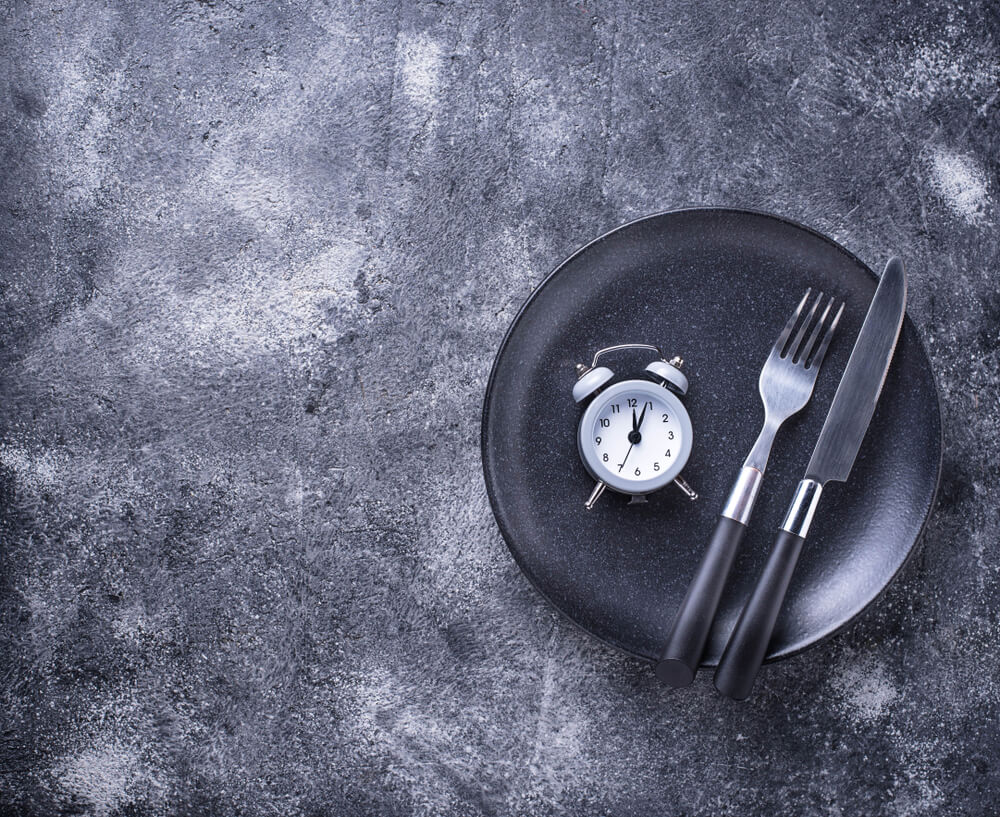
Intermittent fasting or time-restricted eating can augment the keto diet and enhance ketosis. Eating during a restricted window of 8 hour or less can simplify your meals planning as well, with fewer meals per day you need to worry about.
You can start by prolonging your overnight fast and skipping breakfast.
I personally fast for a 16-18 hour window, which is very common. Some of my patients have found an eating window of 2 hours a day works better. It’s all about your personal preferences.
Keto and Exercise for More Energy

In the context of the keto diet, exercise utilizes stored glucose which leads to increased ketone production. While following keto, you may notice that certain types of exercise can kick you out of ketosis temporarily, but increase ketone production afterwards.
Additionally, lean, strong muscles make more mitochondria, which translates into more energy. So having an ongoing exercise routine can help support healthy energy levels.
Final Thoughts: Is Keto Diet the Right One for Me?
While there is still not enough evidence on the long-term effects of a ketogenic diet, we know that a short-term keto diet may offer some impressive health benefits.
For me personally, a healthy nutrient-dense keto diet has helped accomplish what I was always looking for: good energy and a proven way to protect my future well-being.
Many of my patients have had great success with the keto diet with significantly better energy and cognitive function.
I believe there’s no more important “biomarker” for good health than how we feel. Good energy and well-being are what motivate us the most to stick with any new food plan.
I hope you find this total wellness approach to the keto diet helpful. I wish you the very best success in your journey to a better health.
Resources
- Neuroprotective and disease-modifying effects of the ketogenic diet, Maciej Gasior, Michael A. Rogawski, and Adam L. Hartman.
- Long-term effects of a ketogenic diet in obese patients, Hussein M Dashti, MD PhD FICS FACS, Thazhumpal C Mathew, MSc PhD FRCPath, and Naji S Al-Zaid, BSc PhD.
- Ketogenic Diet for the Treatment of Refractory Epilepsy in Children: A Systematic Review of Efficacy, Frank Lefevre, MD, and Naomi Aronson, PhD.
- Dietary ketosis enhances memory in mild cognitive impairment, Robert Krikorian, Marcelle D Shidler, and Deborah J Clegg.
- Protecting Your Body and Emotional Wellness from COVID-19 - March 27, 2020
- The Healthy Keto Diet: How to Sustain Your Energy and Stop Fatigue - February 28, 2020

